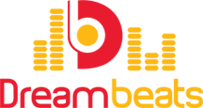The data reveal a growth in funds rates, a contraction associated with the NPL proportion and going back on equity (RoE) somewhat below banks’ cost of assets. Besides asset top quality and success, functional danger stay a key concern going forward.
Capital rates continuous to improve in Q4, powered by a boost in investment, which more than counterbalance a little rise in hazard weighted property. The CET1 proportion attained a all-time high of 15.5% on a fully packed basis, upwards by 40bps QoQ. The control proportion (on a totally packed grounds) increased to 5.8percent from 5.5percent in the earlier one-fourth. This was supported by growing capital, but a decline altogether possessions.
The NPL proportion diminished by 20bps to 2.6%. The decline ended up being due to a contraction in NPLs, which exceeded the reduction in loans and progress. NPL ratios declined for both people and non-financial corporates (NFCs). Although the NPL proportion enhanced for most economic industries they enhanced for rooms and ingredients providers (up from 7.8percent to 8.5percent QoQ) and arts, amusement and fun (up from 6.7percent to 7.3per cent). The display of phase 2 financial loans achieved 9.1percent in Q4, revealing a 110bps boost QoQ.
Financial loans under EBA qualified moratoria nearly halved in Q4. They declined from around EUR 590bn in Q3 to around EUR 320bn in Q4. The drop was more noticable for NFC exposures than for loans to families. The express of phase 2 financial loans under moratoria (26.4per cent) are above that for debts under expired moratoria (20.1percent) and almost 3 x the proportion for total loans (9.1per cent). This might suggest that debts, which have been nonetheless under moratoria, may be those with higher threats excited. Debts under general public promise plans (PGS) achieved about EUR 340bn, up from around EUR 290bn in Q3. Whereas for PGS loans the share of stage 2 loans (11.7%) was over the total typical of 9.1percent, the NPL proportion (1.1percent) was actually less than half with the as a whole average (2.6per cent).
Profits remained firmly hushed. RoE declined from 2.5% in Q3 to 2% in Q4. An upswing in internet cost and payment income could not compensate for the decrease in net interest money. Aforementioned had been due to the contraction in interest bearing possessions, amid a set web interest margin. Price of possibility stayed higher and almost unchanged at 75bps, however with highest dispersion, indicating various conditions among specific banks. The price tag to earnings ratio increased by 40bps to 65.1per cent in Q4.
Pressure on success is anticipated to be persistently higher. The degeneration of house high quality and doubt throughout the recovery might keep carefully the price of possibility increased, while powerful competition consistently include stress on net interest margins and charge money. Into the temporary, the repricing of general investment could be quicker than that the investment part, hence, incorporating stress on margins. Banking companies will have to streamline their particular operational framework not minimum because their clients include more and more utilizing digital channels.
Banking institutions’ liquidity situation more improved. The liquidity coverage proportion (LCR) reached 173.1per cent in Q4 (171.2per cent in Q3). The loan to deposit ratio declined from 113.6per cent in Q3 2020 to 112.2% in Q4, supported by a growth in clients build up from families and NFCs. The investment burden ratio remained unchanged at 27.9percent.
Phishing efforts and various other different cyber-attacks are getting to be usual. The rise in remote consumer on boarding and a soaring participation in digital currency transactions may present financial institutions to extra cash laundering (ML) / radical financing (TF) threats. Risks of brand-new types of misconduct as well as potentially deceptive strategies connected with COVID-19 assistance methods have never abated.
Records to editors
The numbers part of the possibility Dashboard are derived from an example of 130 banks, covering above 80per cent from the EU/EEA banking market (by total assets), at highest standard of integration, while nation aggregates have big subsidiaries (the list of banks can be seen right here).




